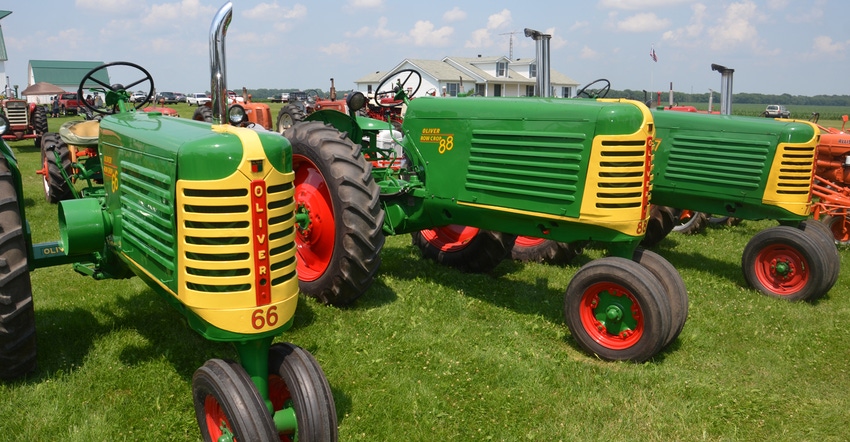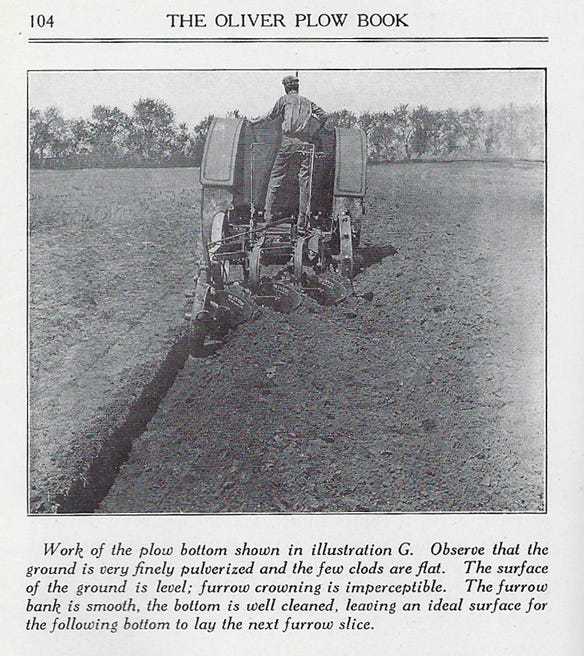March 21, 2019

Read these opening statements about agriculture and see if you can guess when they were written. What type of book offered this advice?
“The treatment of a farmer’s soil is entirely within his hands. Success is measured by his knowledge and the diligence with which he applies those laws of Nature which are related to crop growing.
“These laws are universal. A farmer can apply them to meet his own particular need better than acting upon the advice anyone else can give him because he understands his soil conditions. Other people do not.”

WISE BEYOND TIMES: This picture and information from “The Oliver Plow Book” intertwined plowing with the care of soil and principles of growing crops.

Who could argue with that advice? Doesn’t it sound familiar? How many Extension specialists today recommend trying something on your own farm first on a limited basis before jumping into it with both feet? Maybe it’s applying sulfur to corn or soybeans, or maybe it’s trying a new product that you haven’t used before. And how many seedsmen worth their salt ask questions about what type of soils you have in each field before they start recommending which hybrids might do better in one location or another?
These nuggets of wisdom are from a book copyrighted in 1920. These words were the preface to a 200-page treatise about plowing. It comes from “The Oliver Plow Book,” distributed by the Oliver Chilled Plow Works, a South Bend, Ind.
Different time
The times may have been different, but the advice still applies. It’s just that in 1920, moldboard plowing was how farmers prepared the soil. Today, few people use a moldboard plow.
Here’s some more advice from the book, which may sound like common sense, even if you’re chisel-plowing, disking or no-tilling.
“There is a vast difference between operating a farm and a factory. The process of manufacture from the receiving of the crude materials to the finished product is entirely in the hands of the manufacturer. That is, he can control every step in the process from start to finish.
“It is not so with the farmer. The farmer can control only the operation of the machinery. He has to have a partner to enable him to successfully grow crops. That partner is Mother Earth. He has to depend upon her for everything except the labor, which is obviously part of his contract.”
Here’s the payoff, the take-home message. “Obviously ,the farmer who succeeds best must understand Nature. It is a hopeless task to learn all the whims and caprices of Nature, but it is possible to learn how to treat Mother Earth so that she can use whims and caprices of Nature to bring forth bountifully.”
Whims of nature — like the 100-degree swing in wind chill one day earlier this winter? Or like the 30 inches of rain during 2015’s growing season? Maybe things haven’t changed so much in a century after all.
The rest of the book is devoted to how you can plow best with plow bottoms made by Oliver. But in those first few pages are words of wisdom that even a no-tiller might find useful.
You May Also Like




